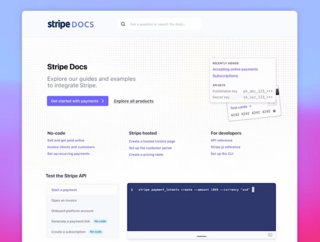OpenAI launches its new multimodal AI GPT-4

OpenAI has announced the launch of GPT-4, the latest iteration in its deep learning model, which it says ‘exhibits human-level performance’ on various professional and academic benchmarks from the US bar exam to SAT school exams.
The company has also released details of big-name companies and organisations, including Morgan Stanley, Stripe, Duolingo and the Government of Iceland, which are already utilising GPT-4
In January, Microsoft announced a multibillion-dollar investment in OpenAI, intended to accelerate AI breakthroughs.
Following previous investments in OpenAI 2019 and 2021, the agreement extended the two companies' ongoing collaboration across AI supercomputing and research.
“Over the past two years, we rebuilt our entire deep learning stack and, together with Azure, co-designed a supercomputer from the ground up for our workload,” said the OpenAI team in a statement on their website. “A year ago, we trained GPT-3.5 as a first “test run” of the system. We found and fixed some bugs and improved our theoretical foundations. As a result, our GPT-4 training run was (for us at least!) unprecedentedly stable, becoming our first large model whose training performance we were able to accurately predict ahead of time.
“As we continue to focus on reliable scaling, we aim to hone our methodology to help us predict and prepare for future capabilities increasingly far in advance—something we view as critical for safety.”
Initially, OpenAI says GPT-4's text input capability will be available via ChatGPT and the API with a waitlist.
Despite its capabilities, OpenAI says that GPT-4 shares some limitations with earlier GPT models, such as “hallucinating” facts and making reasoning errors. However, GPT-4 has significantly reduced hallucinations compared to previous models, scoring 40% higher than GPT-3.5 on internal adversarial factuality evaluations.
Stripe leverages GPT-4 to streamline user experience and combat fraud
Earlier this year, Stripe asked 100 employees to do something highly unusual: stop their day jobs and instead, dream up features and functionality for the payment platform using the newest generation of OpenAI’s language learning model, GPT-4. Engineers from teams spanning support, onboarding, risk, and docs considered where Stripe could use artificial intelligence that understands free-form text and images and builds human-like responses, to improve—or alter—a feature or workflow.
“Our mission was to identify products and workflows across Stripe that could be accelerated by large language models and to really understand where LLMs work well today and where they still struggle,” says Eugene Mann, Product Lead for Stripe’s Applied Machine Learning team. “But just having access to GPT-4 enabled us to realise, ‘Oh, there are all these problems that could be solved with GPT surprisingly well.’”
Stripe’s team put together a list of 50 potential applications to test GPT-4; and after vetting and testing, 15 of the prototypes were considered strong candidates to be integrated into the platform, including support customization, answering questions about support, and fraud detection.
“Stripe had previously been using GPT-3 to help their support team better serve users through tasks like routing issue tickets and summarising a user’s question,” Mann added. “GPT-4 was a game changer. It opened up a lot of areas.”
Morgan Stanley wealth management deploys GPT-4
Morgan Stanley hosts a content library comprising hundreds of thousands of pages covering investment strategies, market research, commentary, and analyst insights; a massive repository stored across numerous internal sites, primarily in PDF format, which necessitates advisors to sift through extensive information to address specific queries.
This process can be both time-consuming and unwieldy, so Morgan Stanley is using GPT-4 to power an internal-facing chatbot that performs a comprehensive search of wealth management content and attempts to unlock the cumulative knowledge of Morgan Stanley Wealth Management, says Jeff McMillan, Head of Analytics, Data & Innovation, whose team is leading the initiative.
“You essentially have the knowledge of the most knowledgeable person in Wealth Management — instantly”, says McMillan. “Think of it as having our Chief Investment Strategist, Chief Global Economist, Global Equities Strategist, and every other analyst around the globe on call for every advisor, every day. We believe that is a transformative capability for our company."






